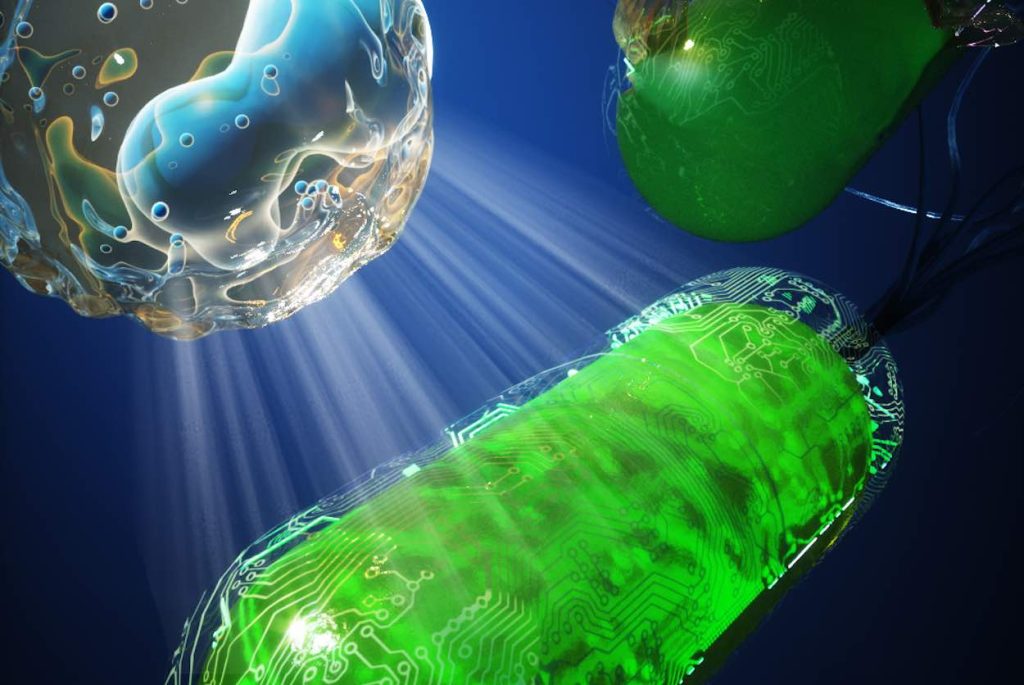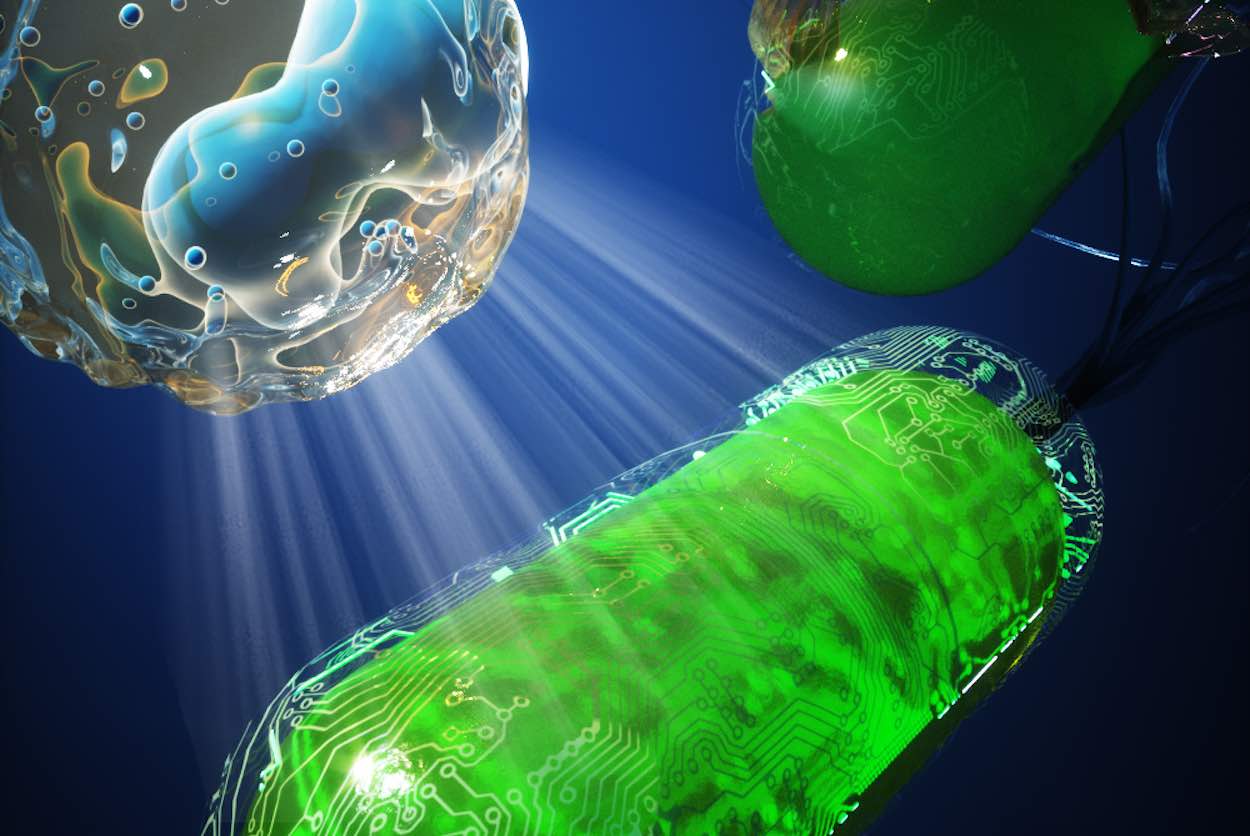
An ‘invisibility cloak’ for cancer drugs has been developed by scientists.
It hides ‘good bacteria’ from the immune system, enabling them to reach tumors undetected.
The masked probiotic could revolutionize therapy. In experiments, it wiped out diseased cells in mice.
It is hoped the technique will work even better in humans, who are 250 times more sensitive to bacteria.
Biomedical engineer Professor Tal Danino said, “What is really exciting about this work is we are able to dynamically control the system.
“We can regulate the time bacteria survive in human blood, and increase the maximum tolerable dose.
“We also showed our system opens up a new bacteria delivery strategy in which we can inject bacteria to one accessible tumor, and have them controllably migrate to distal tumors such as metastases, cancer cells that spread to other parts of the body.”
Infection fighting T cells sometimes fails to distinguish friend from foe. The genetically engineered “microbial encapsulation system” solves this.
MORE: New Cancer Therapy Completely Destroys Advanced Ovarian and Colorectal Tumors in 6 Days
In nature, bugs protect themselves from attack with a coating of sugary polymers known as capsular polysaccharides, or CAP.
Tetsuhiro Harimoto, a PhD student in the lab, said, “We have shown proof of concept in mouse models.
“But given that humans are 250 times more sensitive to bacterial toxins than mice, we expect our results may have an even bigger effect on human patients than on mice.”
He explained, “We hijacked the CAP system of a probiotic E. coli strain Nissle 1917.
“With CAP, these bacteria can temporarily evade immune attack. Without CAP, they lose their encapsulation protection and can be cleared out in the body. So we decided to try to build an effective on/off switch.”
They named it iCAP (inducible CAP), tweaking the structure with a protein called IPTG that programs and alters the E. coli cell surface.
The team at Columbia University, New York, changed how long it survived in human blood, by tuning amounts of the small molecule.
Bacteria-based immunotherapy is a growing area of interest in cancer research – with a wave of techniques being explored today.
But the alternative approach faces a number of challenges. Unlike traditional drugs, they are alive and can proliferate within the body.
They are also detected by the body’s immune system as foreign and dangerous, causing high inflammatory response.
Too much means high toxicity due to over-inflammation or rapid bacteria elimination. Too little means no therapeutic efficacy.
Dr Jaeseung Hahn said, “In clinical trials, these toxicities have been shown to be the critical problem, limiting the amount we can dose bacteria and compromising efficacy. Some trials had to be terminated due to severe toxicity.”
The mouse tumor models showed iCAP increased the maximum tolerable dose tenfold thanks to the bacteria dodging immune cells.
LOOK: Experimental Treatment in Spain Puts 18 Cancer Patients in Complete Remission
Over time, the invisibility cloak disappeared meaning the bacteria was eliminated in other parts of the body without side effects.
In further tests, the system was engineered to produce an anti-tumor drug.
Bowel and breast cancers shrank significantly more in lab rodents compared to a control group.
There are more than 80 different types of CAP that exist just for E. coli and even more for other bacteria species that could be engineered using similar approaches.
In addition, CAP is not the only molecule that bacteria have on their surface, and other molecules could be controlled in a similar fashion.
MORE: New Cancer Therapy Completely Destroys Advanced Ovarian and Colorectal Tumors in 6 Days
What is more, other control systems such as biosensors could be used to autonomously control surface properties of therapeutic bacteria.
Mr Harimoto said, “While there is a good deal of laboratory research showing various ways to engineer microbes, it is very difficult to apply these powerful therapies to a complex animal or human body.
Added Prof Kam Leong, “Bacterial cancer therapy holds unique advantages over conventional drug therapy, such as efficient targeting of the tumor tissue and programmable drug release. Potential toxicity has been limiting its full potential.
“The cloaking approach presented in this study may address this critical issue.”
It is described in Nature Biotechnology.
SHARE the Hope, Share This Story…





















Nobel Prize Winner Otto Warburg discovered an even better way to defeat cancer. Dr. Warburg won the Nobel prize for medicine because he proved he could reverse cancer with the use of sodium bicarbonate (baking soda) to create an alkaline environment. He was able to show that cancer can only survive in an acidic environment, meaning that the pH in the body is below the normal level of 7.4 which constitutes an “acidic” state. “All You Need is Love (and Baking Soda)”